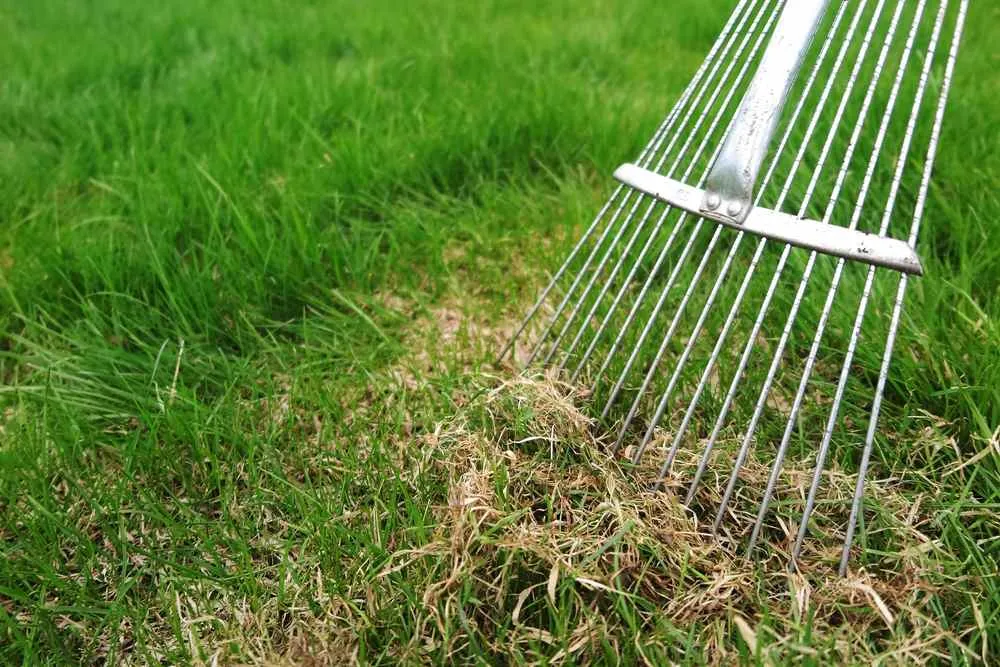Identifying Lawn Thatch: Causes and Removal Tips
By Innovation Grounds
Maintaining a lush, green lawn takes more than regular watering and mowing. One of the lesser-known threats to lawn health is thatch—a layer of organic matter that accumulates between the grass and the soil. In small amounts, thatch can benefit your lawn, but too much can prevent water, air, and nutrients from reaching the roots. In this post, we’ll guide you through identifying lawn thatch, understanding what causes it, and learning the most effective removal methods
What is Lawn Thatch?
Lawn thatch is a spongy layer of dead and living plant material that builds up between the soil surface and the green vegetation of your grass. It’s mostly composed of stems, roots, and rhizomes that are slow to decompose. While a thin layer (less than ½ inch) of thatch can insulate soil and reduce compaction, anything thicker can do more harm than good.
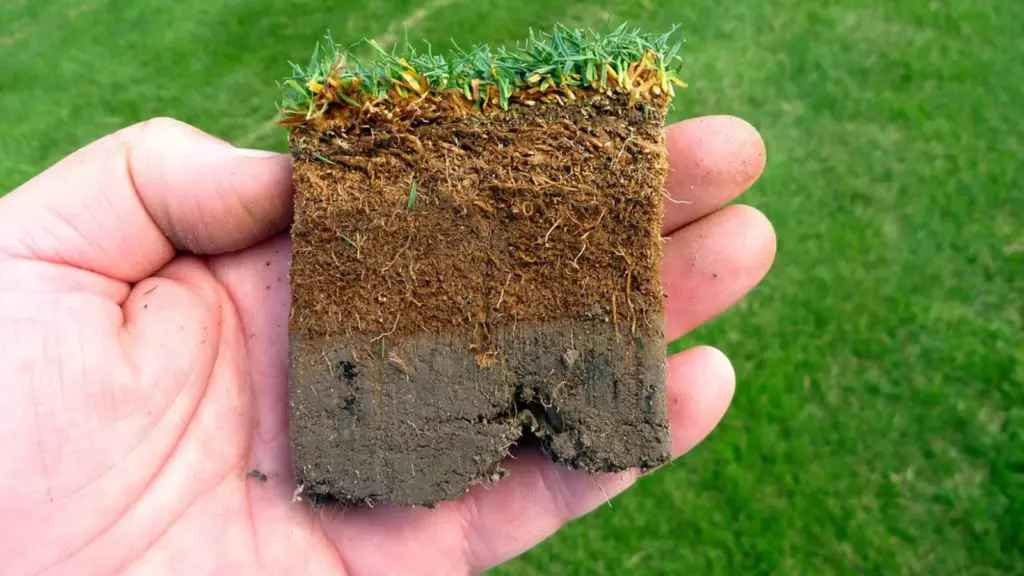
How to Identify Lawn Thatch
Identifying thatch early can prevent extensive lawn damage. Here are some telltale signs:
Spongy feel underfoot: If your lawn feels springy or bouncy when you walk across it, that could indicate excessive thatch buildup.
Patchy lawn growth: Uneven grass growth and discolored patches are often symptoms of restricted nutrient and water flow due to thatch.
Difficult water absorption: If water pools or runs off the surface during irrigation, it might not be penetrating the soil due to the dense thatch layer.
Visual check: Cut a small wedge from your lawn about 2–3 inches deep. A thick brown layer between the green grass and soil is your thatch layer. If it’s more than ½ inch thick, it’s time to take action.
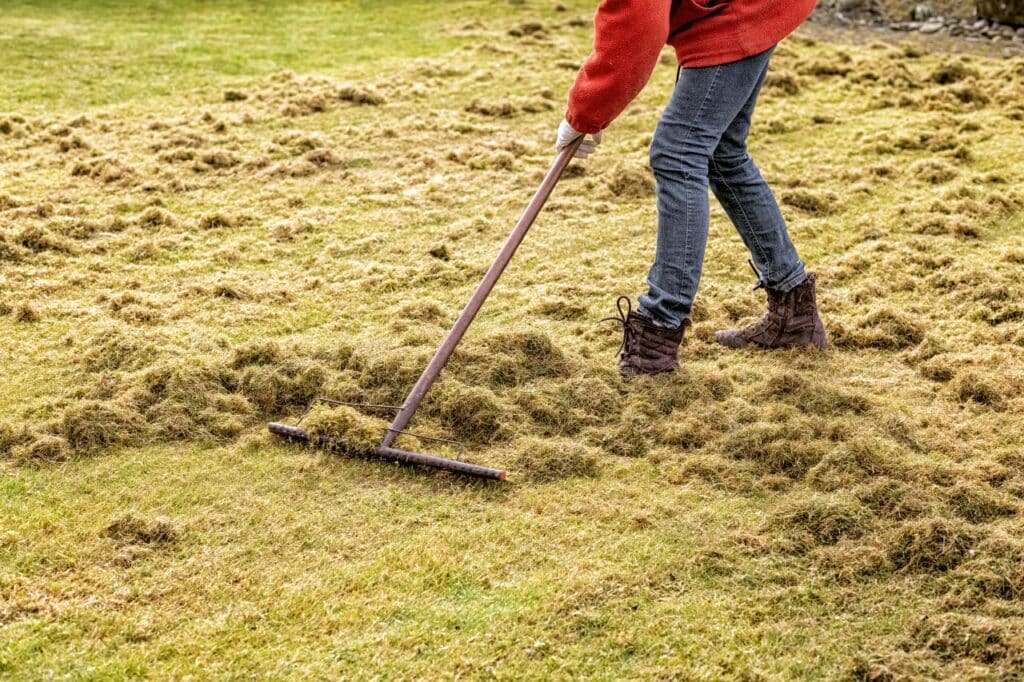
What Causes Thatch Buildup?
Understanding the causes of lawn thatch is key to prevention:
Overwatering or shallow watering: This discourages deep root growth and can promote the accumulation of organic matter near the surface.
Excessive use of nitrogen fertilizers: While nitrogen promotes lush growth, overuse can lead to more organic debris than microbes can break down.
Poor soil aeration: Compacted soils hinder the breakdown of organic material, causing it to accumulate on the surface.
Grass type: Some grass species, like Kentucky bluegrass and Bermuda grass, are more prone to thatch buildup due to their dense root systems and creeping growth habits.
Low microbial activity: Soils with poor microbial populations decompose organic matter more slowly, allowing thatch to build.
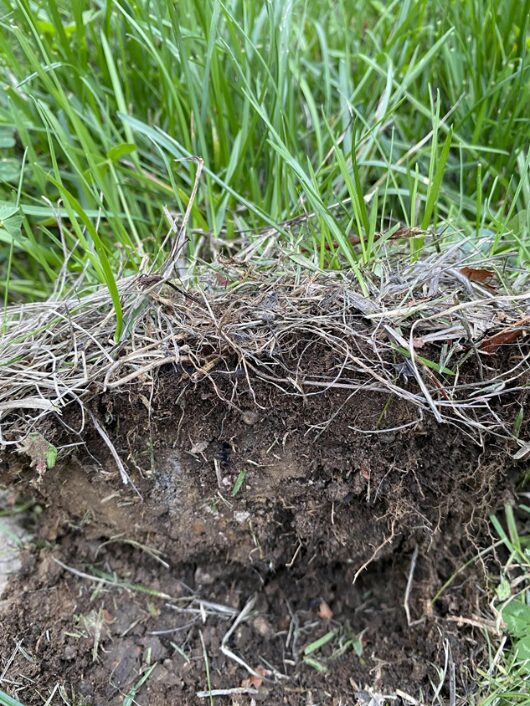
Effective Lawn Thatch Removal Tips
Once you’ve confirmed that your lawn has a thatch problem, it’s time to consider removal techniques. Here are the most effective methods:
1. Dethatching
Dethatching involves mechanically removing the thatch layer from your lawn. You can use:
Manual dethatching rakes: Best for small lawns or light thatch. These rakes have sharp blades that cut into the thatch layer.
Power dethatchers: These machines, also known as vertical mowers, are suitable for thicker thatch and larger areas.
Best time to dethatch: Early spring or early fall, when your grass is actively growing and can recover quickly.
2. Core Aeration
Aeration involves pulling small plugs of soil from the ground to improve air and water movement. It can help:
Stimulate microbial activity to break down thatch naturally
Relieve soil compaction
Promote deeper root growth
Tip: Aerate once or twice a year, especially if your soil is heavy clay or your lawn sees a lot of foot traffic.
3. Compost Top Dressing
After dethatching or aerating, apply a thin layer of compost (¼ to ½ inch) over the lawn. This:
Introduces beneficial microbes to help decompose remaining thatch
Adds nutrients to the soil
Improves soil structure and drainage
4. Adjust Your Lawn Care Routine
Prevention is just as important as removal. Keep your lawn thatch-free by:
Watering deeply and less frequently
Avoiding excessive fertilization
Mowing at the proper height
Regularly raking up leaves and debris
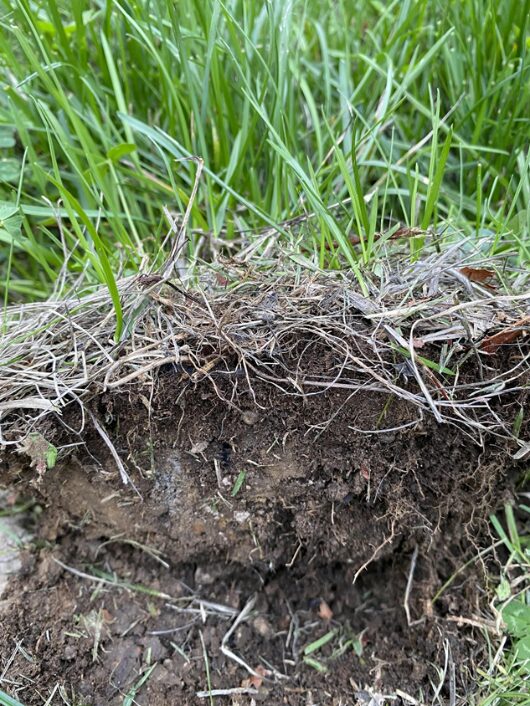
Thatch and Lawn Health: Final Thoughts
A healthy lawn has a balanced ecosystem beneath the surface. Too much thatch suffocates grass roots and invites pests and disease. By identifying lawn thatch early, understanding its causes, and applying effective removal tips, you’ll give your grass the best chance to thrive.
If you’re not sure whether your lawn has a thatch problem or need help with dethatching, consult a professional lawn care service for expert advice.
